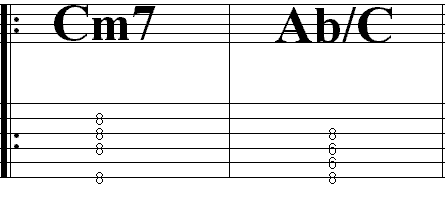So, is your fretboard worn out between the 5th and 8th frets from overuse of the A minor pentatonic scale? Well, let's give the rest of your guitar neck a workout, shall we? Considering the bulk of scale requests are for minor keys, we'll go with C Minor.
Because everyone is stuck in A, E, and F# minor nowadays. Let's expand it a bit. I've given the five basic positions of the C minor scale patterns here. Memorize all of them! It's the only way to effectively play the entire length of the neck. The root notes (in this case, the C notes) are highlighted in gray. Remember that the voicing of the scale (related to the major scale) is 1, 2, b3, 4, 5, b6, b7. In the key of C this means that the normal major scale, consisting of the notes C D E F G A B is altered to be C D Eb F G Ab Bb when changed to a minor scale. This is also commonly known as the Aeolian mode, which I'll explain in a future article.
I start with pattern 2, since it is closest to the nut. With all of these patterns, start on the root note (the first gray note). With a metronome, work your way to the top of the scale, down to the lowest note, and back to the root note. Keep the notes slow and even and concentrate on your precision.

With pattern 3, you have to start the scale with your pinky (once again, the first gray note). Stay in position! Your first finger will do double duty on the fourth and fifth frets, while the other fingers remain on their respective frets.

Again, with pattern4, your first finger does double duty on the 6th and 7th frets. It's a bit easier in this pattern, as the frets are spaced more closely, and only one string requires you move your first finger (the G string).

Pattern 5 requires you to slightly shift positions, so be careful to use the appropriate fingers when approaching the B string.

And finally, pattern 1. Be careful. Your fingers will be close together this high up the neck.

The only complaint I've received is that my tabulature has not been large enough to read. The 8's sometimes look like 0's. So here's some giant Mickey Mouse tabulature so that it's easy to decipher. It's just a four bar chord progression that you can record and practice your C minor scales over.


When practicing this way, utilize all 5 positions! Before you know it, your other frets will get a little work, too! Enjoy, and I'll see you next time!
Paul Kuntz is a working studio musician and has been a professional instructor for past ten years. Paul graduated from the Musician's Institute in 1990, and is author of the guitar instructional book "Chords Scales, Theory and Shellfish"..
He also is a studio engineer and producer for unsigned artists.